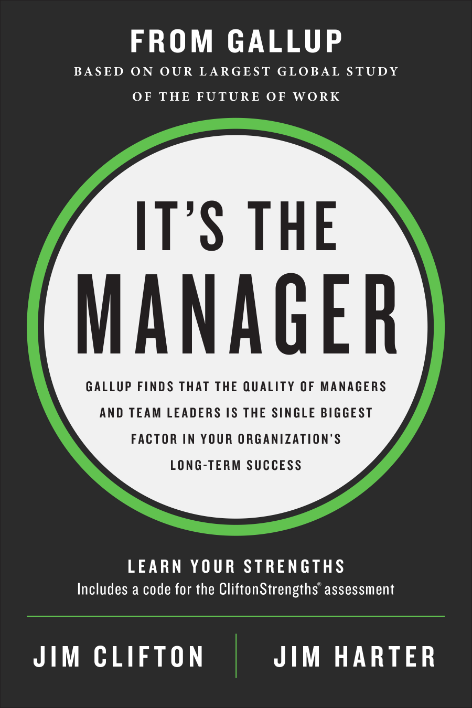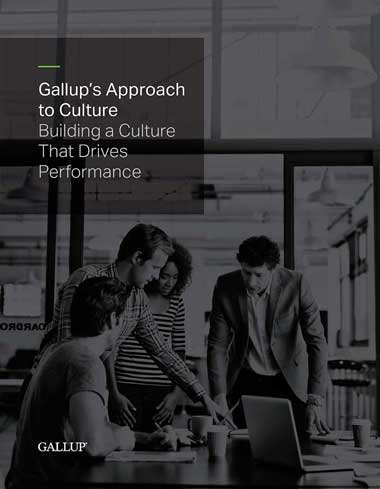Story Highlights
- Constant change is the new normal
- Focus on people, not processes
- Four actions promote change leadership
As leaders well know, constant change is the new normal in today's workplaces.
As a result, organizational agility is increasingly evasive. It's no longer enough to react to disruption -- or to delegate change management to HR or other internal functions.
To get ahead of the competition, organizations need to flip the script on change and enable employees to lead change themselves.
To prepare their people to help lead change, leaders need a workplace culture that lives and breathes adaptability -- a culture with agility in its DNA.
A truly agile workplace culture empowers employees to think on their feet and spearhead innovation with ease.
Leaders must fundamentally alter their approach to change management to create an adaptable work culture. Modern change realities require modern change strategies that prioritize the human capacity to thrive in a state of continuous change.
The Behavioral Economics of Change
Traditional change management focuses on processes and tools -- the logistics of "what is changing" and "how it will change." Change management typically is about minimizing disruption, and it often underemphasizes the behavioral side of change.
The thing is, this approach doesn't work when disruption is constant (which might help explain why more than 70% of corporate change initiatives fail). While processes and technology are important, the true opportunity that traditional change management misses lies in liberating people to create and sustain change.
In today's ever-fluctuating work environments, the workplaces that win are home to change leaders. The ability to initiate and navigate change should permeate all levels of the company, not just the C-suite. Of course, this is a tall order -- one that requires a nuanced understanding of the behavioral economics of change.
Gallup defines behavioral economics as "the mathematical description of the role human nature plays in just about everything."
When leaders understand human emotional dynamics -- including mindsets, behaviors and cultural norms -- they can create a work environment that energizes people to get ahead of change and push the organization forward.
| The Mindset of Managing Change | The Mindset of Leading Change | ||||||||||||||||||||||||||||||||||||||||||||||||||||||||||||||||||||||||||||||||||||||||||||||||||
|---|---|---|---|---|---|---|---|---|---|---|---|---|---|---|---|---|---|---|---|---|---|---|---|---|---|---|---|---|---|---|---|---|---|---|---|---|---|---|---|---|---|---|---|---|---|---|---|---|---|---|---|---|---|---|---|---|---|---|---|---|---|---|---|---|---|---|---|---|---|---|---|---|---|---|---|---|---|---|---|---|---|---|---|---|---|---|---|---|---|---|---|---|---|---|---|---|---|---|---|
| Drive change from the top down. | Inspire change at all levels. | ||||||||||||||||||||||||||||||||||||||||||||||||||||||||||||||||||||||||||||||||||||||||||||||||||
| Prioritize the structural aspects of change. | Prioritize the behavioral and cultural aspects of change. | ||||||||||||||||||||||||||||||||||||||||||||||||||||||||||||||||||||||||||||||||||||||||||||||||||
| A manager's role is to inform employees about change. | A manager's role is to coach and empower people to create change. | ||||||||||||||||||||||||||||||||||||||||||||||||||||||||||||||||||||||||||||||||||||||||||||||||||
| Gallup | |||||||||||||||||||||||||||||||||||||||||||||||||||||||||||||||||||||||||||||||||||||||||||||||||||
How to Create a Change-Leading Workplace Culture
Here are four ways leaders can foster change leadership and encourage their employees to own disruption.
-
Involve, trust and empower your people.
Leaders can motivate employees to accelerate change when they cultivate and integrate employees' ideas. To source these insights, leaders should broaden their internal networks, give employees and managers a voice, and develop employees at all levels.
Leaders also need to entrust employees with autonomy. Employees need far more than information to guide change locally -- they need authority, coaching and accountability. For example, leaders should involve managers and employees who are affected by change as early as possible and ensure employees understand the importance of their role in the change.
Ultimately, leaders can develop employees into agents of change by consistently demonstrating that employees' ideas and contributions matter.
-
Prioritize manager development.
Managers wield tremendous influence over how well employees adopt and sustain desired behaviors. In fact, Gallup data show that managers account for 70% of the variance in team engagement -- a critical driver of discretionary effort.
When managers serve as coaches, not bosses, they fuel engagement and inspire employees to move away from their routines and adopt new mindsets and behaviors. To position managers as coaches, leaders should invest in ongoing manager development -- and most importantly, give managers the freedom to coach their team members.
For example, managers who are overwhelmed with administrative responsibilities will find it difficult to fully invest in one-on-one coaching conversations. But when leaders support managers with the right tools and performance expectations, they can unleash managers to strengthen employee awareness, adoption and accountability.
-
Use analytics to get ahead of employees' perceptions and emotions.
Emotions primarily drive decision-making, not rational thinking. In fact, 70% of decision-making is based on emotion and 30% on rational thought. This can be problematic because change can cause mixed emotions among employees -- from fear and uncertainty to anticipation and excitement.
Leaders should use multiple channels to understand employees' emotions and perspectives, including ongoing dialogue, employee analytics and feedback mechanisms. With in-depth insights, leaders can adjust their strategies, grow employee buy-in and disseminate best practices.
For example, through individual conversations with key stakeholders, leaders can glean success strategies from early adopters and early resisters. And with qualitative and quantitative data on their people's change readiness, leaders can discover ways to unify employees behind a change initiative.
Because managers are responsible for inspiring change locally, leaders should involve managers in feedback collection and give them access to real-time employee analytics.
-
Create a culture of learning.
A disruption-ready organization never stops learning and growing. To lead change, employees must repeatedly adapt to new discoveries and shifting demands.
Leaders should create processes and cultural norms that propagate rapid experimentation, adaptation and collaboration. Siloed learning won't create a culture of change leaders; leaders must ensure their people are aligned and working together to drive success.
Further, leaders need to use performance management practices that promote ongoing communication and coaching between managers and their teams. The right performance management solutions enable managers to keep employees "in the know," manage role expectations and inspire desired behaviors.
Disruption in the world of work is here to stay. It will continually alter workplaces, workforces, workspaces, workflows and workloads.
Only leaders who respond to this new norm by disrupting their own philosophies and strategies about change can position the heart of their organization -- their people -- to continuously adapt and excel.
Create a culture that energizes people to get ahead of change:
- Read how culture affects performance.
- Learn how Gallup can help you reshape your culture.
- Watch a Gallup webinar to learn how to achieve cultural transformation.






